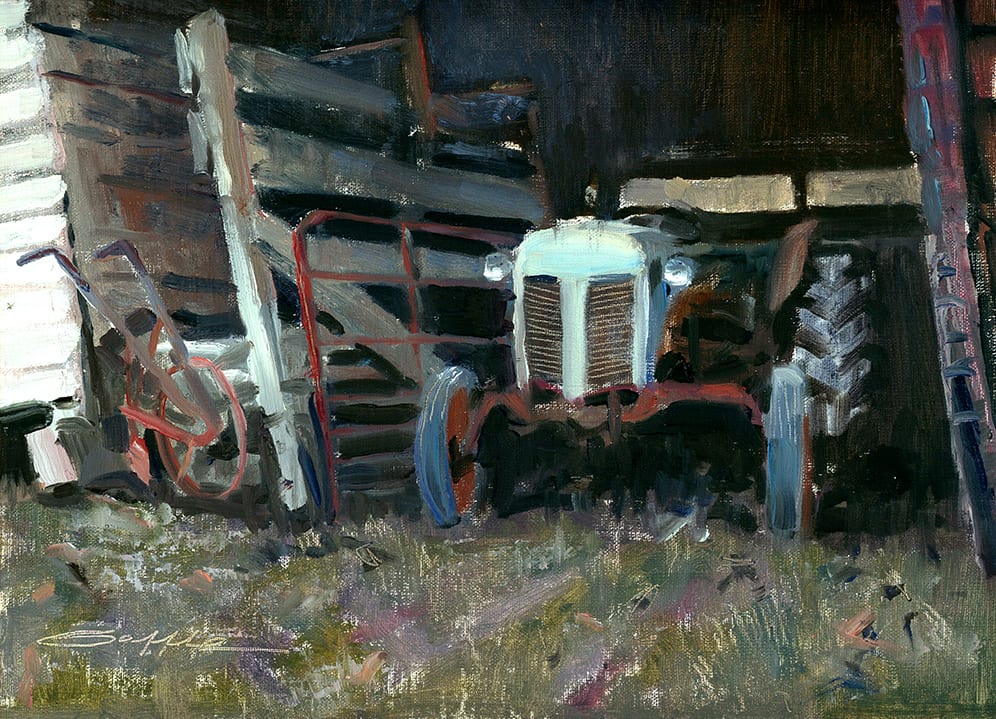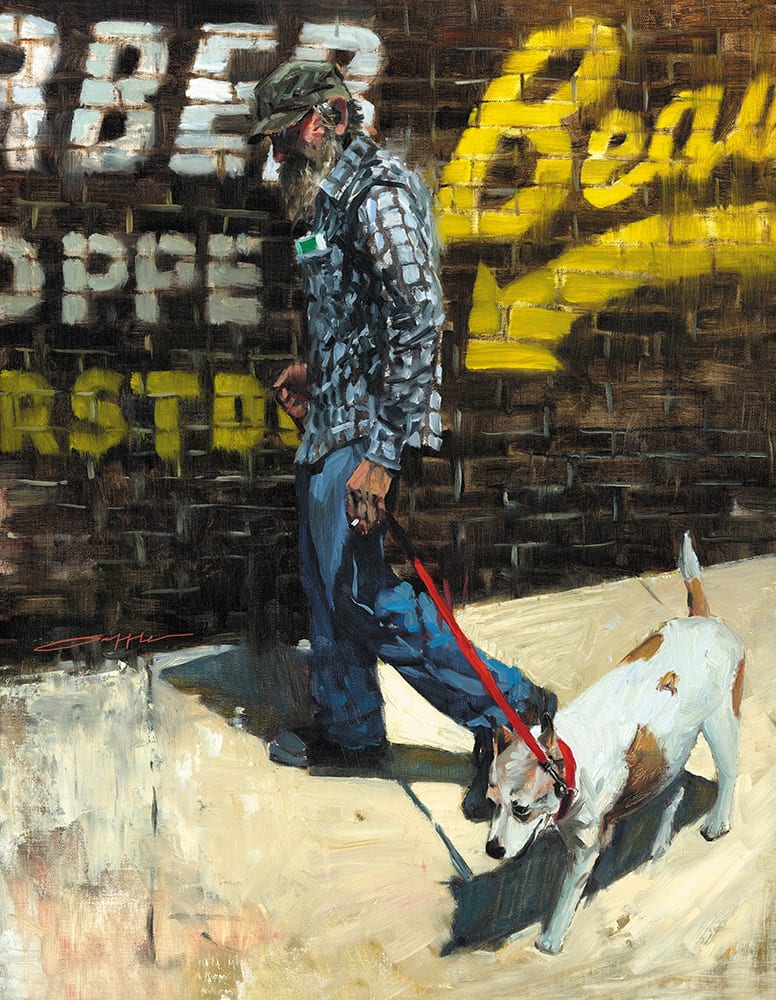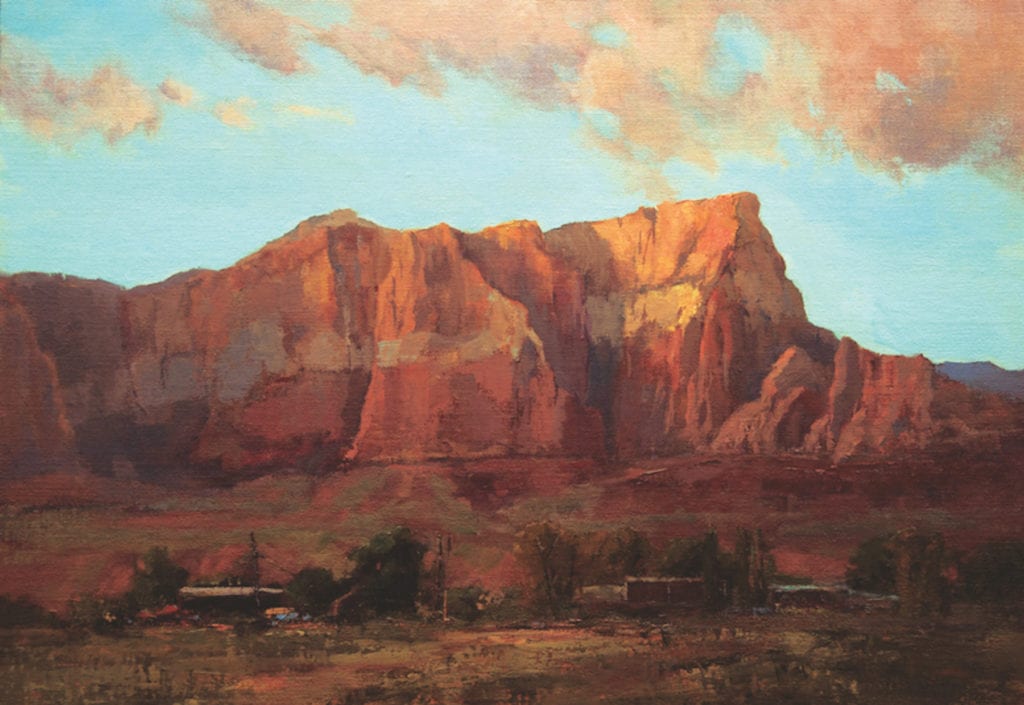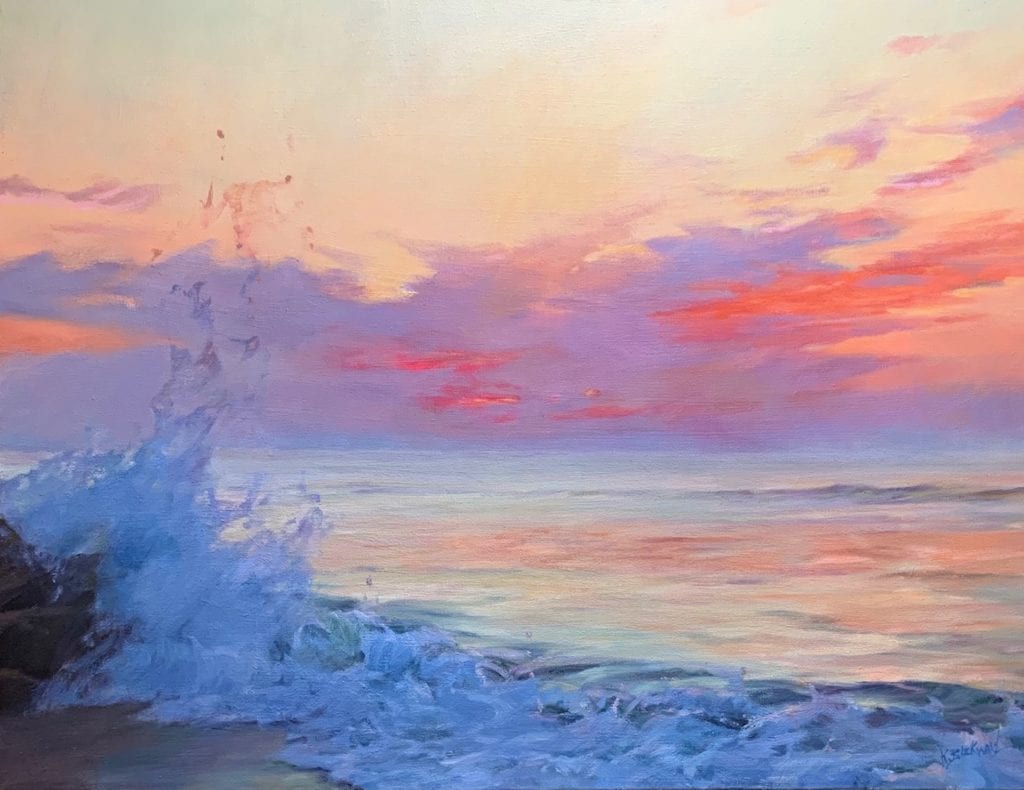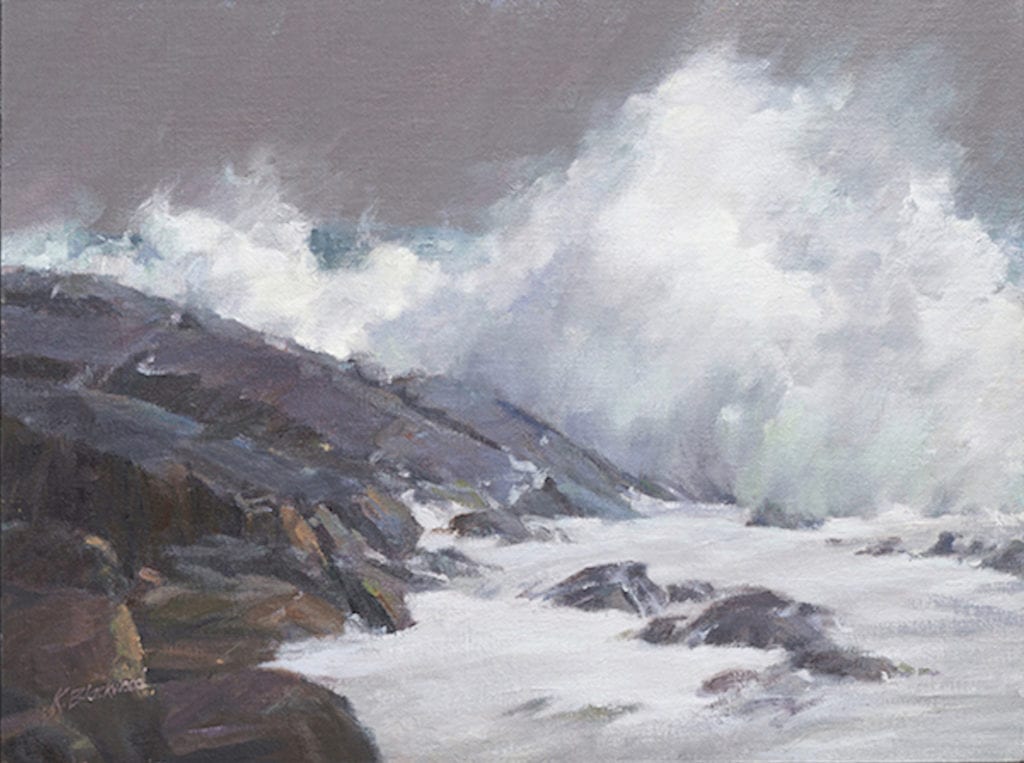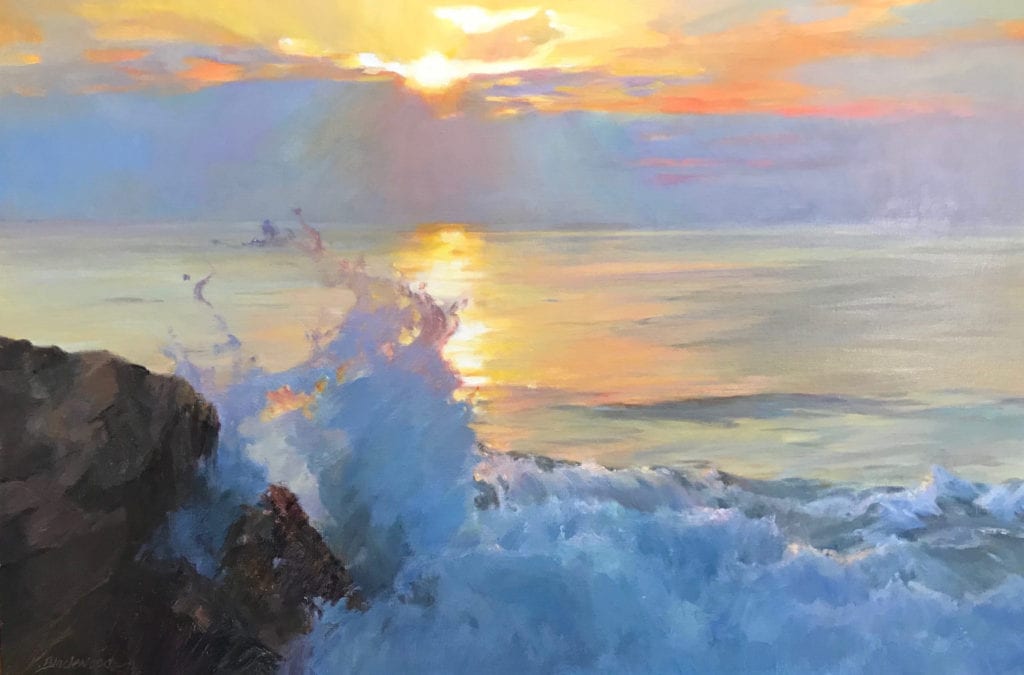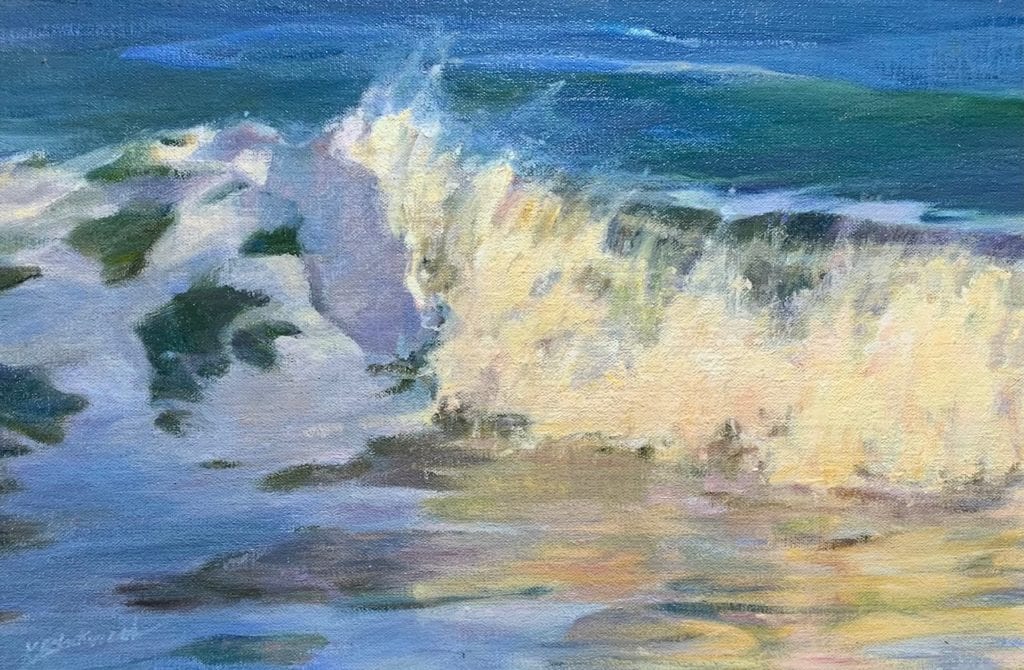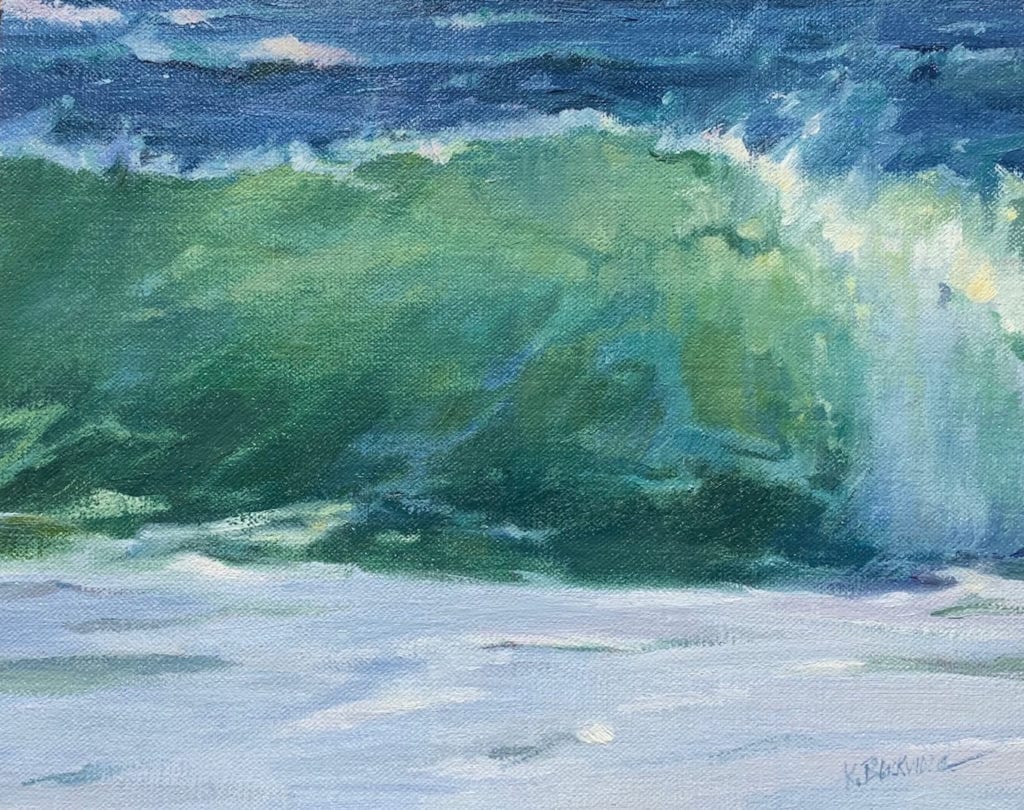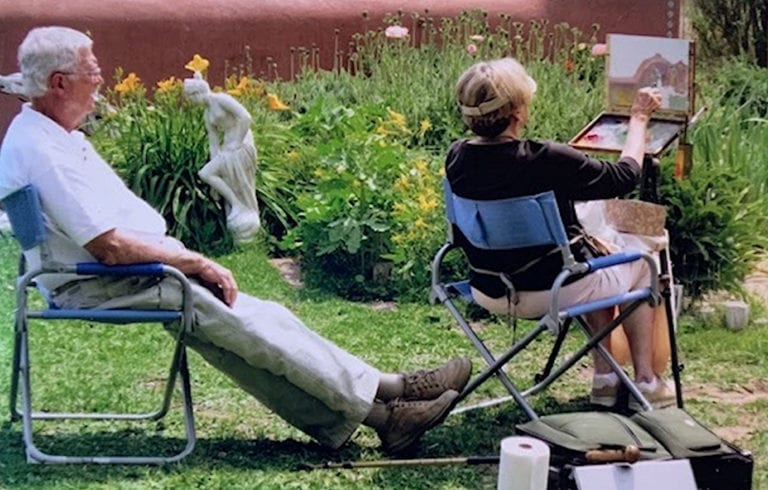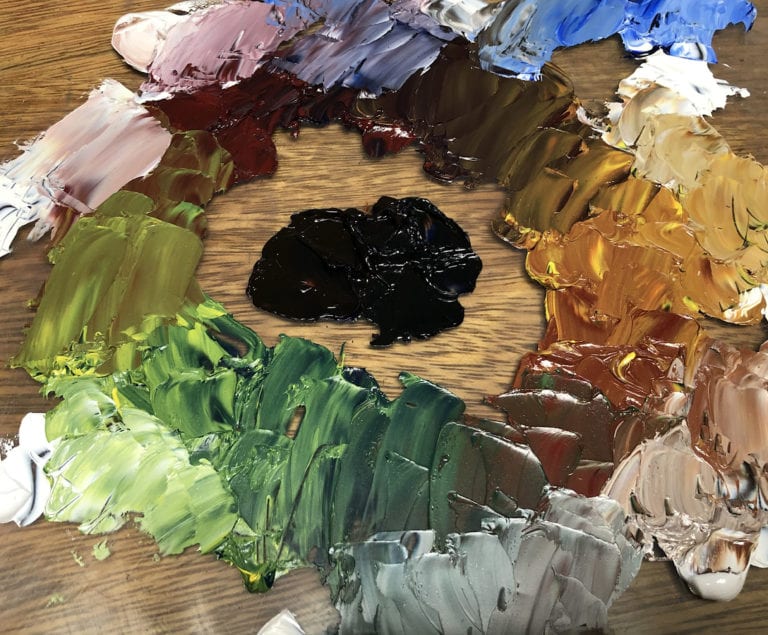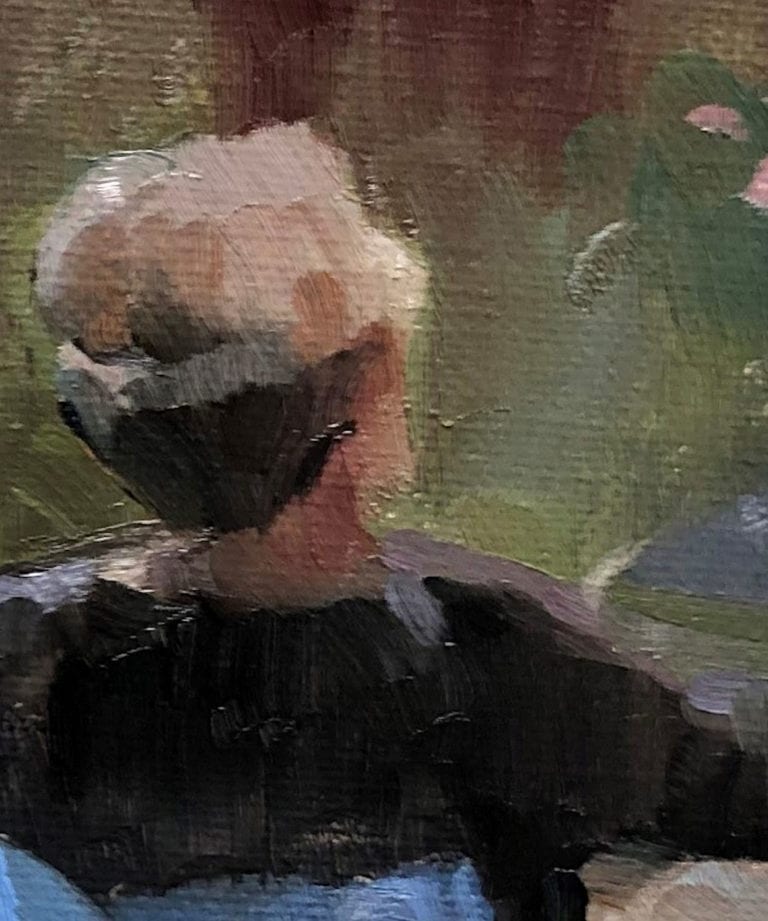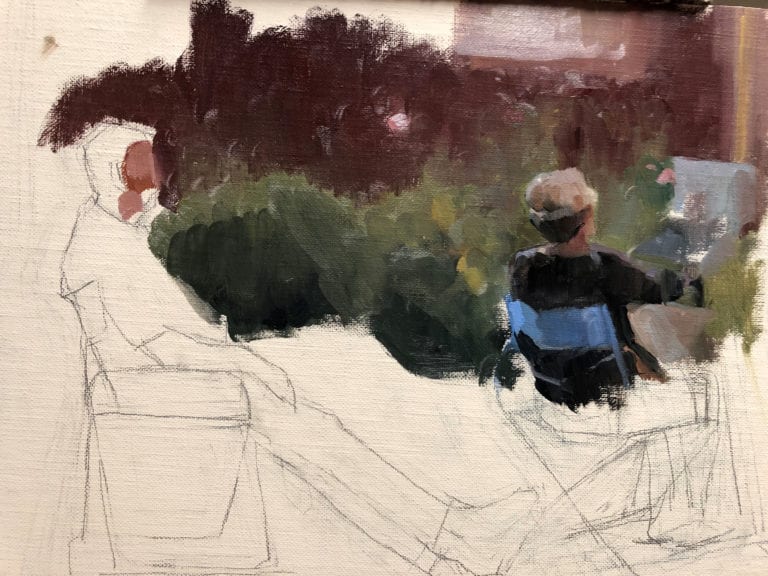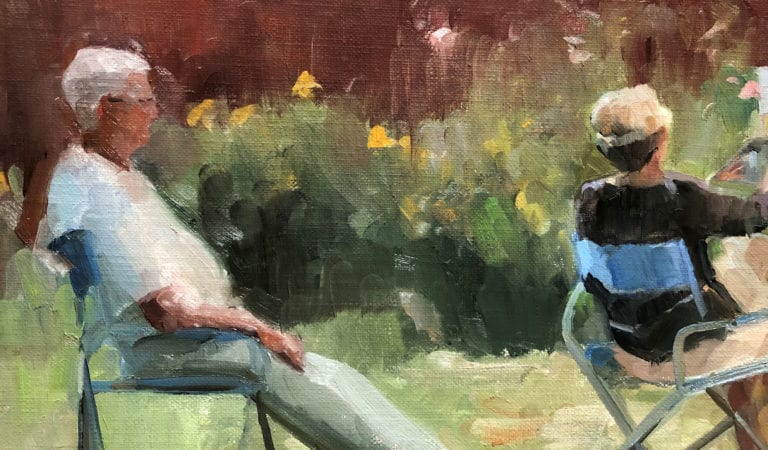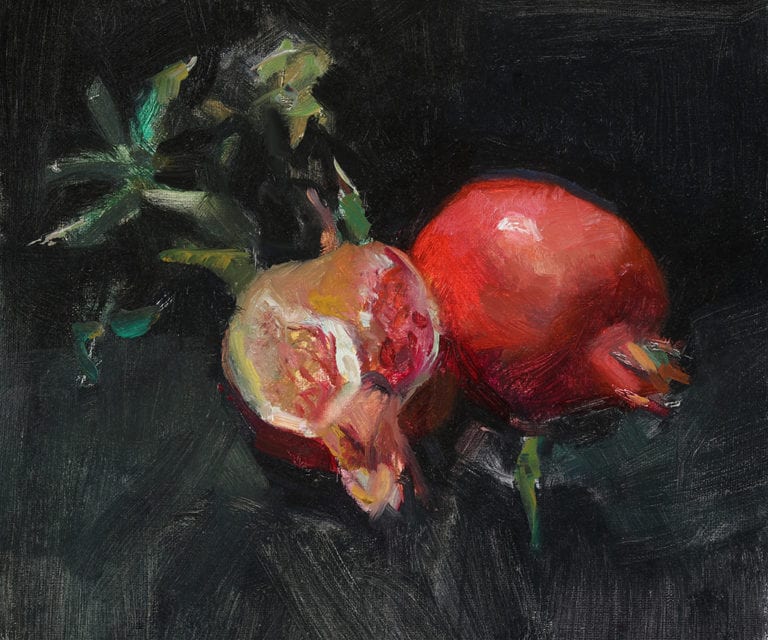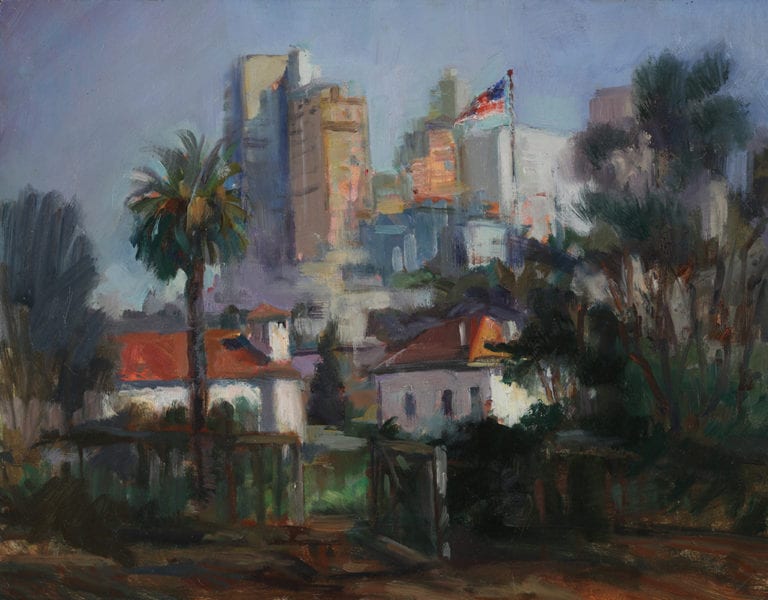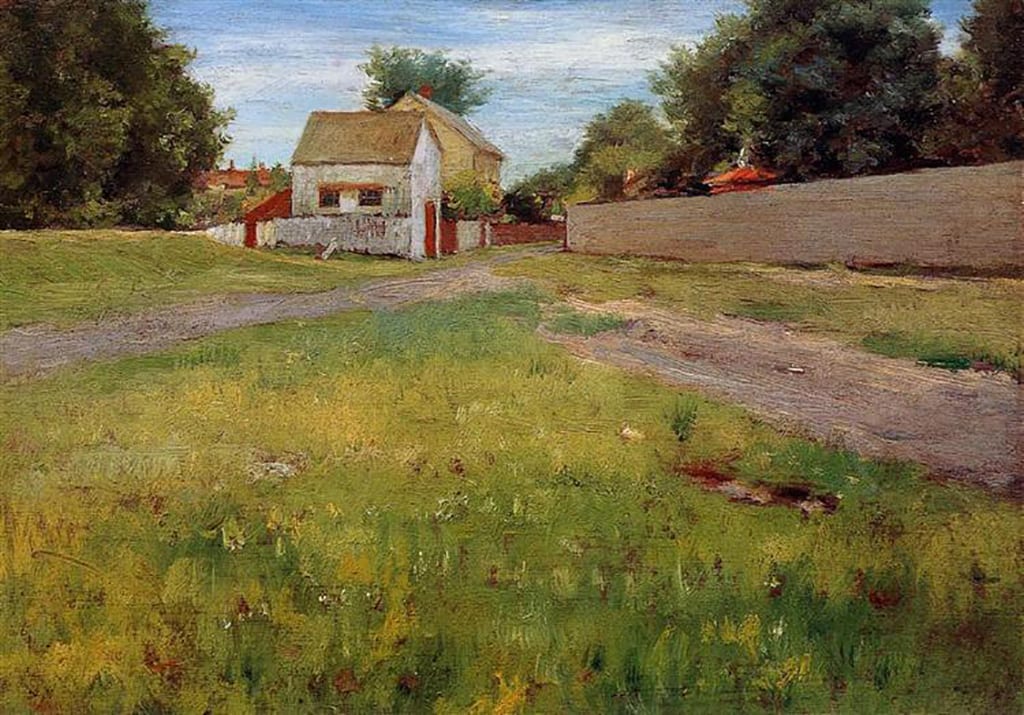As a relative newcomer to fine art, one of the biggest challenges I faced was what subject to paint. I had never painted in oil and was drawn to it by watching a local French artist who was painting wonderful French country landscapes and Italian villas with bold colors and thick palette knife strokes. I also took notice that art buyers were drawn to his French accent and his beret. His paintings were flying off his easel. Why else would I paint, but to make the same stacks of money?
After taking classes from him, I too became very adept at those same foreign vistas. It did not take long for this Texas native to realize I had no idea what I was trying to paint, and I was committing another sin by trying to rely on found photography. I did not want to be a big fake. I had barely left the state of Texas, let alone traveled overseas! There are tons of that kind of art being produced in factories already, and besides that, I would have looked pretty out of place wearing his French beanie.
Then I was saved by going to watch my first paint out hosted by the Outdoor Painters Society of Texas. My eyes were opened to the joys of plein air painting. Who would have thought I could find a muse just outside my own house? Joining this group is the only reason I am even writing this blog today.
Most artists I have met are very humble and willing to share their knowledge. I love the comradery. But plein air painting is not for the weak-hearted. To put in the required work day after day, you must genuinely love your subject. Enthusiasm cannot be faked.
Being out in the landscape, you are surrounded by sky and trees, and that is what the majority of painters paint. However, I found myself looking for more intimate subjects, something that I knew. I was looking for what Texas means to me. A love for rusty old trucks, collapsing barns, ancient tractors and other rural images reminded me of my childhood. I see the strength in those subjects.
Now, several hundred of those paintings later, I became known to many people as “the truck and tractor guy”.
It was a title that I felt was limiting. I found myself apologizing when I shared another truck painting with comments like, “I know it’s another truck but here you go”.
I am not alone in feeling uncomfortable with my label. I hear tons of other painters say the same thing as they share their own clichéd subjects. You know what I’m saying, all of those waterfalls, cabins nestled in the woods, and yes, the dreaded red barns. Don’t get me wrong, it is nice to be known at all among your peers, but I started to feel like that was all anyone thought about me and it was not really the vehicles that I even cared about…it was the emotions and the deep-rooted connections I had to these subjects I was painting.
When I get in a painter’s drought, I paint my trucks and tractors. When I have only a short time to paint, I choose my default subjects. Without these subjects, I may not be painting at all. It takes motivation to get that brush mileage you need and for the majority of painters that motivation is not money. I needed my muse, I found it and it works for me. Behind most famous artists is a muse that inspires new passion and better work. When you are inspired, the dictionary states, “mentally you are stimulated to do or feel something”. Above all, an inspired person often feels compelled to be different and do better. Paint what your inner voice tells you.
I have been honored to be accepted in OPA National and Regional shows. Interestingly, my selected paintings have not been of trucks and tractors, but instead were portraits, figure studies and even animals. So far, only one vehicle painting has made it in, and that was a train. But none of those paintings would have been possible without my muse work. So, learn to embrace your muse. Paint those red apples again and again. If you are good at it, others will see and feel your passion displayed in paint. Do not paint someone else’s French countryside!
I found my muse and my reason for painting, but I’m still waiting on those stacks of money. ;?)


